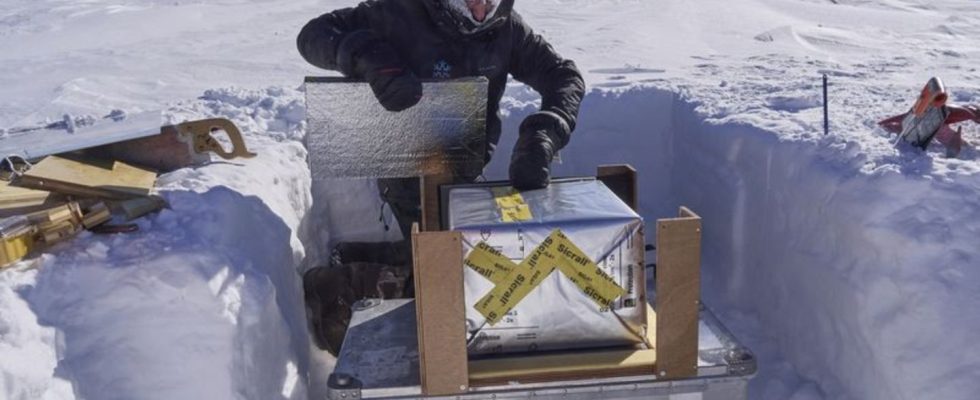Research
Jogging at minus 20 degrees – climate researchers in Antarctica
Matthias Jaggi finishes building the metamorphosis box with the snow block. photo
© Matthias Jaggi/SLF/dpa
Climate researchers are drilling for ice in Antarctica that is hundreds of thousands of years old. They are looking for clues about the climate at the time. Their deployment lasts months. The engineer Matthias Jaggi reports on what fascinates him there – and what he is missing.
In the summer heat of “only” minus 20 degrees In Antarctica, Matthias Jaggi (40) likes to jog 500 meters in shorts and sneakers. “You feel every last muscle fiber and every nerve,” said the Swiss engineer from the WSL Institute for Snow and Avalanche Research SLF in Davos to the German Press Agency. “You feel really awake.”
Jaggi is currently working at the French-Italian research station Dome Concordia on a more than 3,000 meter high plateau in Antarctica. It’s summer there right now. At the end of January it gets colder again, often around minus 50 degrees, says Jaggi. The station is around 15,000 kilometers from Central Europe.
Jaggi’s project
He examines certain processes of change in snow. The findings are important for the analysis of ice cores. At the Dome Concordia station, deep holes are drilled to uncover ancient layers of ice. It goes deeper and deeper. Layers 1.5 million years old will soon be reached.
Each layer of snow that has compacted into ice over time has, depending on the previous weather conditions, a specific structure and chemical properties that researchers can use to draw conclusions about the climatic conditions at that time. From the so-called isotopic composition of water, for example, conclusions can be drawn about the air temperature at that time.
“With the water isotopes stored in the ice cores, you will soon have an archive of temperature data over the last 1.5 million years – crazy, right?” said Jaggi. “My experiment is a small piece of the puzzle in the overall understanding of the climatic processes on our earth.”
Jaggi also sends snow samples to Davos for examination with computer tomography. Transporting things at a constant temperature of at least minus 20 degrees is a challenge. The polystyrene boxes are first transported 1,200 kilometers by snowcat to the French station Dumont d’Urville, from there by icebreaker to Brest in France and then by truck to Davos.
Jaggi has been in Antarctica for several months for the second time. He is fascinated by ice and snow, especially the Antarctic coastal regions. “The sea, the icebergs, the sea ice, the color transitions from white to blue, penguins, birds, mountains, glaciers coming into the sea – extremely impressive,” he said. “Knowing that this frozen part of the world is at risk from global warming is depressing.”
Life in the research station
There are currently around 60 people at the research station. Christmas and New Year’s Eve will of course be celebrated, said Jaggi, albeit in the daylight. The South Pole is currently facing the sun and remains bright for 24 hours. The station is equipped with a sauna, climbing wall, table football, sports and film room. And Jaggi plays the electric piano. “It’s good to live here,” he said. What he misses: shopping and cooking himself, paragliding and the mountains.
The researcher explained that minus 20 degrees can be tolerated if there is no wind. “You can almost work in a T-shirt when the sun is shining.” He spends the night at a summer camp around 500 meters from the station – hence the jogging route in sneakers and shorts. His work gives him a lot of fresh air, so he tends to forego it in his free time. “The tip of my nose is happy when it is protected as much as possible,” said Jaggi. “The cold has already left its mark.”
Climate and environmental protection are a big issue at the Dome Concordia station. Waste is meticulously sorted, crushed and packaged. Everything will be transported away and disposed of in Australia. The shower water is filtered and reused. Leftovers are always used when eating, explained Jaggi. More solar or wind power is being considered to renovate the almost 20-year-old station. However, any use of technology is a challenge under the extreme conditions.

